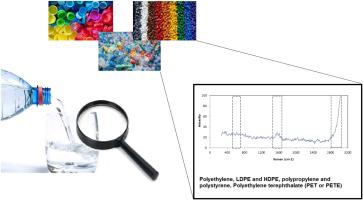Journal of Water Process Engineering ( IF 6.3 ) Pub Date : 2020-10-07 , DOI: 10.1016/j.jwpe.2020.101708 Pouran Makhdoumi , Abdulfattah Ahmad Amin , Hazhir Karimi , Meghdad Pirsaheb , Hyunjung Kim , Hooshyar Hossini

|
Microplastics (MPs) have recently been detected in different products and environmental samples, ranging from wastewater to drinking water, as well as in products consumed by humans. However, few studies have addressed the contamination by MPs in bottled mineral water. Therefore, in the present study, the contamination by MPs was investigated from 11 samples of popular brands of bottled mineral water in Iran. Using a staining method and stereomicroscope analysis, MPs were detected in 9 out of the 11 sample brands. The amount, shape, and color of MPs varied in different bottles. The most detected MPs were in the shape of fragment (93 %) and fiber (7%), with an average concentration of approximately 8.5 ± 10.2 particles/L. In addition, there were no MPs in 20 % of the collected samples, which was the reason for the observed high variation of SD. The presence of MPs was demonstrated by FTIR and Raman stereoscopy and the most likely polymers found were PET, PS, and PP. Finally, four scenarios were investigated for daily and annual human exposure to microplastics. The study results indicate that the human daily and annual intake were negligible when compared using Valmet textures; approximately 0.015 P/kg/bw/day and 5.35 P/kg/bw/year for adults and approximately 0.065 P/kg/bw/day and 23.43 P/kg/bw/year for children.
中文翻译:

伊朗最受欢迎的瓶装矿泉水品牌中出现了微塑料颗粒,并评估了人体暴露程度
最近,在从废水到饮用水以及人类消费的产品和环境样本中都检测到了微塑料(MPs)。但是,很少有研究解决MPs在瓶装矿泉水中的污染。因此,在本研究中,从伊朗流行品牌瓶装矿泉水的11个样品中调查了MP的污染。使用染色方法和立体显微镜分析,在11个样本品牌中的9个中检测到MP。MP的数量,形状和颜色在不同的瓶子中有所不同。检出最多的MP呈碎片状(93%)和纤维状(7%),平均浓度约为8.5±10.2颗粒/ L。此外,在20%的采集样品中没有MP,这是观察到的SD高变化的原因。FTIR和拉曼立体镜证实了MP的存在,发现的最可能的聚合物是PET,PS和PP。最后,针对人类每天和每年接触微塑料的情况,研究了四种方案。研究结果表明,与维美德贴图相比,人体的每日和每年摄入量可忽略不计;成人约0.015 P / kg / bw /天和5.35 P / kg / bw /年,儿童约0.065 P / kg / bw /天和23.43 P / kg / bw /年。











































 京公网安备 11010802027423号
京公网安备 11010802027423号